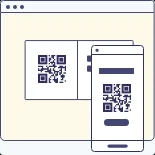Non classé
Saas Agreement Pitfalls
As the world of software as a service (SaaS) continues to grow and evolve, so do the agreements that accompany it. SaaS agreements are essential for defining the terms and conditions of a SaaS service, but businesses must be careful to avoid common pitfalls when drafting and signing these agreements.
Here are some of the most common SaaS agreement pitfalls to watch out for:
1. Unclear Service Level Agreements (SLAs)
One of the most important aspects of any SaaS agreement is the Service Level Agreement (SLA), which outlines the level of service a provider commits to delivering. However, an unclear or ambiguous SLA can leave clients with unrealistic expectations and limit the provider`s obligation to deliver the service as promised.
To avoid this pitfall, businesses should ensure that their SLAs are clear, specific, and measurable. The provider should also be willing to offer guarantees and penalties for not meeting SLA targets.
2. Insufficient Data Security Measures
As businesses continue to rely on cloud-based solutions, data privacy and security are becoming increasingly important. A SaaS agreement should have strict protocols for data security and confidentiality to protect sensitive information from unauthorized access or disclosure.
The agreement should outline the provider`s security policies, data encryption measures, and disaster recovery procedures. It`s also essential to ensure that the agreement complies with relevant data protection laws and regulations, such as GDPR and CCPA.
3. Hidden Fees and Charges
Another common pitfall is the inclusion of hidden fees and charges in SaaS agreements. This can lead to unexpected costs for businesses that may not have budgeted for additional charges.
To avoid this pitfall, businesses should carefully review their agreement and ask the provider to disclose any additional fees and charges upfront. The agreement should clearly outline the pricing structure, including any setup fees, ongoing support charges, or termination fees.
4. Lack of Customization
A SaaS provider may offer a pre-packaged solution that may not fully fit the unique needs of a business. A lack of customization may limit the effectiveness of the solution and lead to additional costs and complexity down the line.
To avoid this pitfall, businesses should ensure that the SaaS agreement includes provisions for customization and support for their specific needs. The agreement should also provide transparent information about the provider`s development roadmap and product updates, allowing businesses to better plan for future needs.
5. Limited Liability
Finally, SaaS agreements often include liability limitations and disclaimers that can limit a provider`s accountability in case of failure or breach. These limitations can leave businesses vulnerable and increase the risk of losses or damages.
To avoid this pitfall, businesses should ensure that their agreement includes robust liability provisions that clearly define the responsibilities of the provider and set appropriate remedies for breaches or failure. The agreement should also include clear termination clauses that allow businesses to end the agreement if their needs are not met.
In Conclusion
SaaS agreements are essential for any business looking to engage with a SaaS provider. However, businesses must be mindful of the common pitfalls that can lead to unforeseen costs, limited effectiveness, and increased risk. By following the tips outlined above, businesses can ensure that their SaaS agreement includes clear and comprehensive terms that address their specific needs and reduce the likelihood of future disputes.


